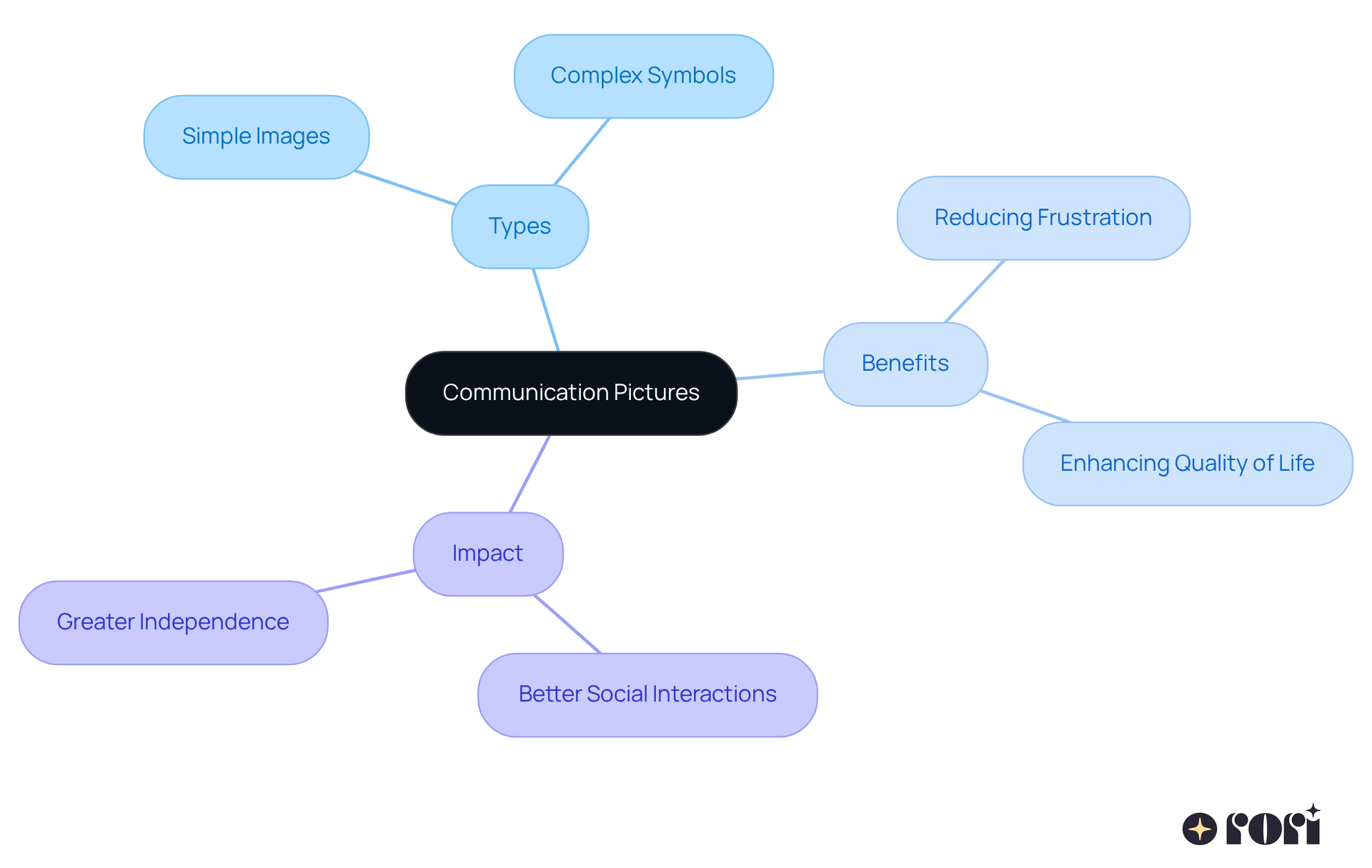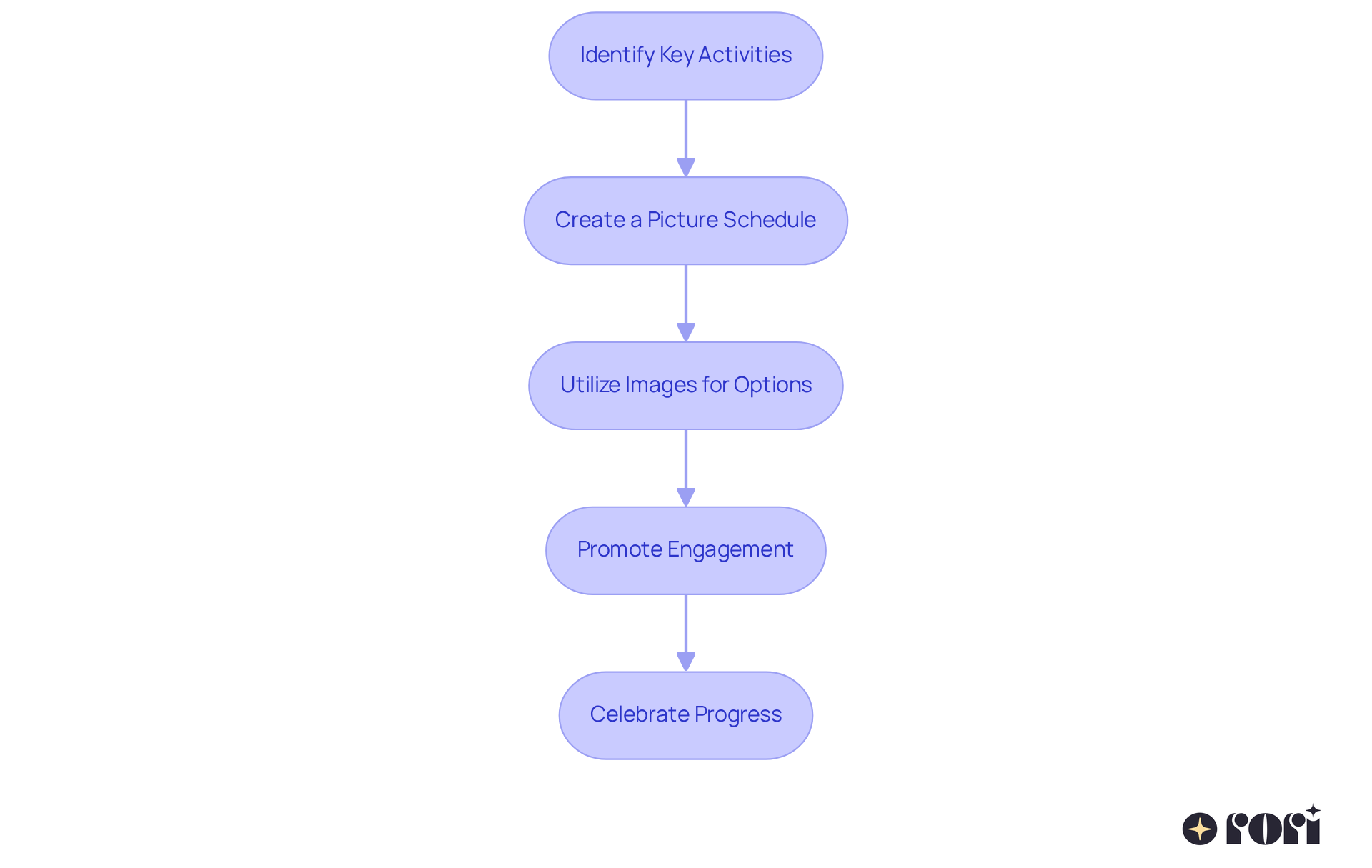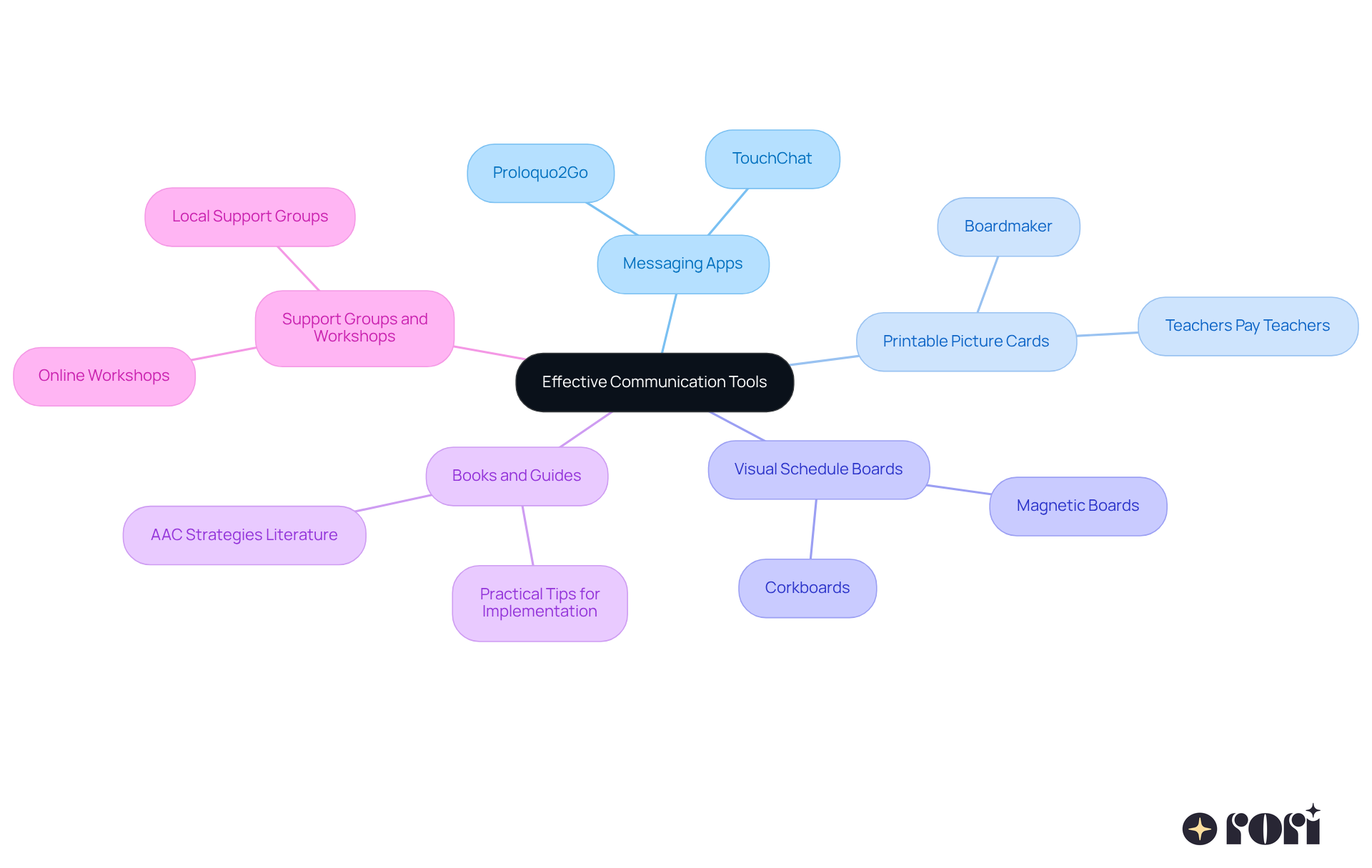This article highlights how communication pictures can truly enhance the way non-verbal children express their thoughts, needs, and emotions. Imagine the joy when a child can share what they feel without frustration! Visual aids are not just helpful; they can transform social interactions, making them smoother and more enjoyable for everyone involved.
Let’s take a moment to think about the benefits these tools bring. They can significantly reduce frustration for both kids and parents, creating a more harmonious environment at home. Plus, we’ll share some practical steps to incorporate these visual aids into daily activities, helping to foster better communication skills in a fun and engaging way.
As we dive deeper into this topic, we encourage you to reflect on your own experiences. Have you ever faced challenges in communication with your child? You’re not alone! Many parents share similar stories, and together, we can explore solutions that work.
So, let’s embark on this journey together! We’re here to help you every step of the way, and we can’t wait to see how these tools can make a difference in your lives.
Communication is the cornerstone of human interaction. For non-verbal children, though, expressing thoughts and emotions can often feel like an insurmountable challenge. 😟
But here’s where communication pictures come in! These vital tools can transform that struggle into a more manageable experience, enabling children to convey their needs, preferences, and feelings through visual aids. Many caregivers might wonder: how can these powerful resources be effectively integrated into daily life to maximize their impact?
In this article, we’ll delve into the importance of communication pictures. We’ll offer practical strategies and tools to enhance the expressive abilities of non-verbal children, ultimately fostering their independence and enriching their social interactions. Let’s explore this together!
Communication pictures for non verbal youngsters act like little helpers that can make a big difference. They represent words, concepts, or even emotions, allowing these kids to share their thoughts more effectively. From simple images of everyday objects to more complex symbols that depict actions or feelings, these visuals come in many forms.
The magic of visual interactions lies in their ability to bridge a young person's ideas with their capacity to express them verbally. By using communication pictures for non verbal expressions, children can communicate their needs, preferences, and emotions. This can significantly reduce frustration and enhance their overall quality of life. Isn’t that amazing?
Studies have shown that kids who use visual aids often enjoy better social interactions and greater independence. This makes visual communication a crucial part of their developmental journey. So, let’s explore this together and see how we can support our little ones in expressing themselves!

To effectively implement communication pictures in daily activities, let’s explore these steps together:
Identify Key Activities: Start by picking out those regular routines where interaction is essential—think mealtime, playtime, or getting dressed. Research shows that beginning with just 3-4 basic daily activities and gradually expanding can really enhance understanding and engagement.
Create a Picture Schedule: Next up, develop a visual schedule using communication pictures that outline the sequence of activities. This approach helps your little one anticipate what comes next by utilizing communication pictures for non verbal interactions, fostering participation and reducing anxiety. Visual schedules have been shown to significantly support early intervention efforts by clarifying daily routines.
Utilize Images for Options: During activities, present your child with communication visuals to offer choices. For instance, at snack time, display images of various snacks and let them pick what they prefer. This not only empowers them but also nurtures their decision-making skills, which are so important for their growth.
Promote Engagement: Encourage your child to use visual aids to express their needs. For example, if they want a toy, motivate them to point to the image of the toy instead of just reaching for it. Interacting with visuals can greatly enhance comprehension and expression, especially since many autistic individuals are visual learners.
Celebrate Progress: Remember to celebrate your child’s use of visual aids with positive reinforcement! This could be a kind word of praise or a small reward. Studies indicate that positive reinforcement can lead to improved engagement and retention of interaction abilities.
By consistently incorporating communication pictures for non verbal children into daily activities, you can help enhance their expression abilities in a natural and supportive setting. We’re here to help you every step of the way!

To effectively support the use of communication pictures, a variety of tools and resources can be invaluable:
Messaging Apps: There are numerous applications, like Proloquo2Go and TouchChat, designed specifically for non-verbal interaction. These apps let individuals create personalized boards with images, making it easier to share their needs and wants.
Printable Picture Cards: Resources such as Boardmaker and Teachers Pay Teachers offer a wide selection of printable picture cards. These can be tailored to develop personalized tools that connect with a young person's interests and routines.
Visual Schedule Boards: Caregivers can boost interaction by using visual schedule boards, which can be bought or made at home with materials like corkboards or magnetic boards. These boards allow for the addition of images depicting daily activities, helping youngsters understand their routines more effectively.
Books and Guides: Delving into literature focused on augmentative and alternative communication (AAC) strategies can provide valuable insights and techniques for effectively using visual resources. These materials often include practical tips for everyday implementation.
Support Groups and Workshops: Joining local or online support groups can offer caregivers additional resources, practical tips, and shared experiences from families facing similar challenges. These communities can serve as a source of encouragement and knowledge.
By leveraging these tools and resources, caregivers can significantly enhance their approach to communication pictures. This ensures that non-verbal children receive the necessary support to develop their communication skills effectively. Let’s explore this together!

Communication pictures are truly vital tools that empower non-verbal children to share their thoughts, needs, and emotions. By using visual aids, these children can engage in meaningful interactions, which helps to reduce frustration and improve their quality of life. We can’t emphasize enough how important communication pictures are; they really bridge the gap between a child’s inner world and their ability to express themselves outwardly.
In this article, we explored various strategies for weaving communication pictures into daily activities. Key steps include:
Plus, we highlighted an array of tools and resources—like messaging apps, printable picture cards, and visual schedule boards—that serve as invaluable supports for caregivers and educators working to enhance communication for non-verbal children.
Ultimately, supporting non-verbal children in their communication journey is a collaborative and rewarding experience. By actively incorporating communication pictures into everyday routines and utilizing the resources available, caregivers can create an environment where these children feel empowered to express themselves. This not only enriches their social interactions but also nurtures their independence, laying a strong foundation for their future communication skills. Embracing these methods and tools is a crucial step toward ensuring that every child has the opportunity to be heard and understood. Let’s explore this together!
What are communication pictures and their purpose?
Communication pictures are visual aids that represent words, concepts, or emotions, helping non-verbal youngsters share their thoughts more effectively.
How do communication pictures benefit non-verbal children?
They allow children to communicate their needs, preferences, and emotions, which can significantly reduce frustration and enhance their overall quality of life.
What types of images are included in communication pictures?
Communication pictures can range from simple images of everyday objects to more complex symbols that depict actions or feelings.
What impact do visual aids have on social interactions for children?
Studies have shown that children who use visual aids often enjoy better social interactions and greater independence.
Why are communication pictures considered important in a child's developmental journey?
They play a crucial role in bridging a young person's ideas with their ability to express them verbally, supporting their overall development.